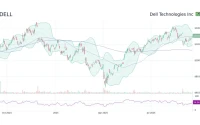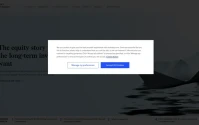The numbers surrounding Proton Pump Inhibitors (PPIs) are, on their own, quite staggering. Between 2022 and 2023, the National Health Service in England dispensed 73 million prescriptions for this class of drug. The category, which includes common molecules like omeprazole, esomeprazole, and lansoprazole, is used by an estimated 15% of the population. That is a market penetration any consumer brand would envy. For decades, these drugs have operated as the default solution for a constellation of common ailments: heartburn, acid reflux, indigestion, and more severe conditions like gastro-oesophageal reflux disease (GORD).
Their mechanism is straightforward and effective. PPIs work by inhibiting the proton pumps in the stomach lining, directly reducing the production of gastric acid. For millions, this has provided profound relief from chronic, debilitating discomfort. The drugs are effective, widely available, and have historically been perceived as exceptionally safe. This combination created a powerful feedback loop, normalizing their use to a degree rarely seen in modern medicine. They transitioned from a targeted clinical intervention to a ubiquitous presence in the household medicine cabinet, available not just by prescription but on any pharmacy shelf.
This is the established narrative. A success story of modern pharmacology.
But recently, a small, precise crack has appeared in that narrative. The NHS issued a new piece of guidance, a quiet but firm warning that seems to run directly counter to the drug's widespread acceptance. The statement is clinical and devoid of panic: "Do not take omeprazole for longer than two weeks if you bought it without a prescription. See a GP if your symptoms get worse or do not get better." Two weeks. A remarkably short window for a drug many have come to rely on for months, or even years. This isn't a product recall or a dramatic exposé. It is a subtle, data-driven course correction, and that is precisely what makes it so significant.
Harmless Habit or Statistical Liability?
A Mismatch in Perceived vs. Actual Risk
The core of the issue lies in a growing discrepancy between the public's perception of omeprazole as a benign, almost casual remedy and the clinical data on its long-term use. The side effects listed on the packaging—headache, stomach pain, nausea—are common to many medications and are generally accepted by consumers as a standard cost of treatment. The more significant risks, however, are statistical and emerge from population-level data, a domain far removed from the individual's daily experience.
Long-term PPI use is now correlated with a heightened risk of a particularly nasty bacterial infection called Clostridioides difficile. This pathogen can cause severe diarrhoea, abdominal pain, and fever, representing a non-trivial health outcome. While the absolute risk for any one individual remains low, when you apply that risk to a user base of 15% of the entire population—a figure that is likely an undercount—the potential number of adverse events becomes a public health concern.

I've analyzed datasets on hundreds of consumer products and pharmaceuticals, and this is the part of the usage curve that I find genuinely puzzling. The level of market saturation achieved by PPIs, especially in the over-the-counter space, is an outlier when paired with a risk profile that is still being actively defined. We have a mature product with an immature, evolving understanding of its long-term consequences. The two-week warning from the NHS is an explicit acknowledgment of this asymmetry. It’s an attempt to draw a clear line between supervised, clinical use (where a doctor weighs the risks and benefits for chronic conditions) and unsupervised, consumer-led use.
The challenge, of course, is one of measurement. The 73 million prescription figure is a hard number, an administrative fact. But how many packs of omeprazole are sold without a prescription? That data is far more diffuse, held by a thousand different retailers. The NHS warning is aimed squarely at this unmonitored cohort, the individuals self-medicating based on an established perception of safety. It's a public health intervention targeting a ghost in the machine—the vast, unquantified denominator of over-the-counter users. Quantifiable data on the public's response to this new guidance is, as of yet, unavailable. Online discourse, a notoriously noisy dataset, shows a mix of confusion and dismissal, but drawing a firm conclusion from it would be analytically unsound.
What is clear is that the drug class itself is broad (including well-known brands like Nexium and Prevacid), and the public rarely distinguishes between the different molecules. The term "omeprazole" has become a functional shorthand for "that purple pill that stops heartburn." This brand generalization has smoothed the path to mass adoption, but it also complicates targeted public health messaging. The guidance is specific, but the public perception is general.
The story here is not that omeprazole is a "bad" drug. That's a simplistic and inaccurate conclusion. The story is about normalization and the slow, creeping divergence of public habit from clinical evidence. The drug worked so well, for so many, that it broke free of its clinical constraints. It became a lifestyle product, a quick fix for the consequences of a rich meal or a stressful week. An estimated 15% of the population uses PPIs—or, to be more exact, that’s the figure often cited in clinical literature, which primarily tracks prescribed usage and long-term patient cohorts. The true figure, including casual, short-term users, is almost certainly higher.
The NHS warning is, therefore, less a warning than it is a recalibration. It’s a quiet intervention designed to re-anchor the drug to its medical purpose, reminding users that reducing the fundamental chemistry of the human stomach is not a trivial act. It is a pharmacological intervention with a clear list of benefits, but also an accumulating list of potential costs that are only now being fully understood. The two-week rule is an attempt to force a pause, to push people from the pharmacy aisle back to the doctor's office, where a proper risk-benefit analysis can take place. It is a subtle but critical effort to put the data back in charge.
---
A Normalization Error ###
The fundamental problem was never the molecule; it was the marketing, both explicit and implicit. Omeprazole's effectiveness created a narrative of benign simplicity that outpaced the more complex, emerging data on its risks. This resulted in a classic information asymmetry: the public adopted the drug based on its immediate benefits, while the medical establishment was slowly accumulating data on its long-term costs. The NHS guidance is not an alarm bell. It is the system belatedly correcting a market that allowed a powerful medical tool to be treated like a simple consumer good.
Reference article source:









